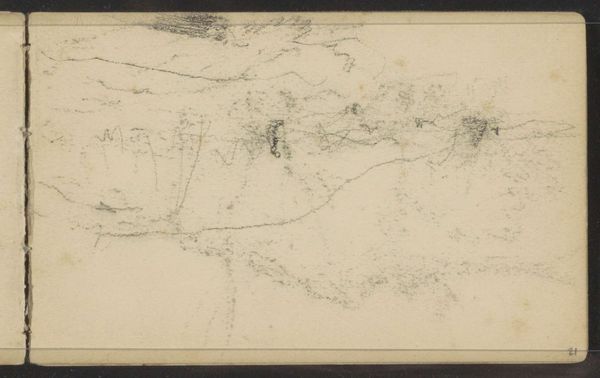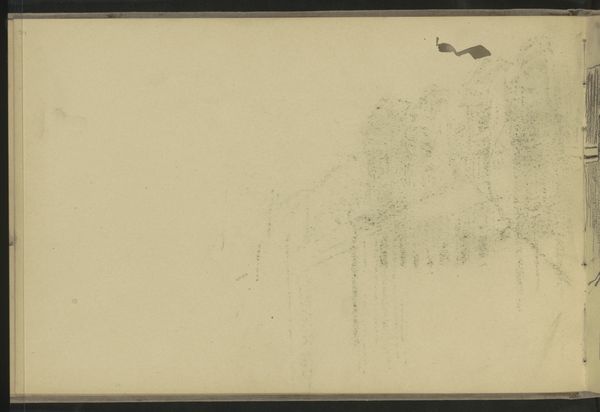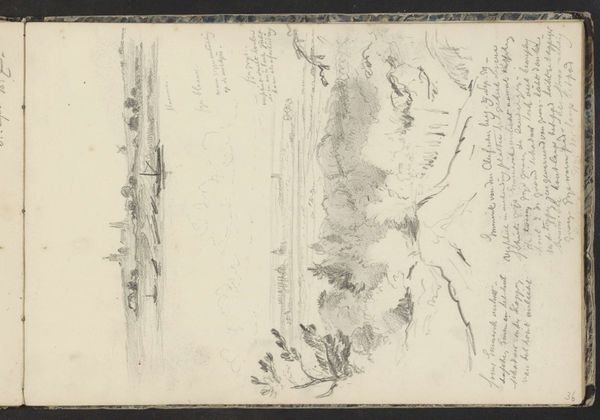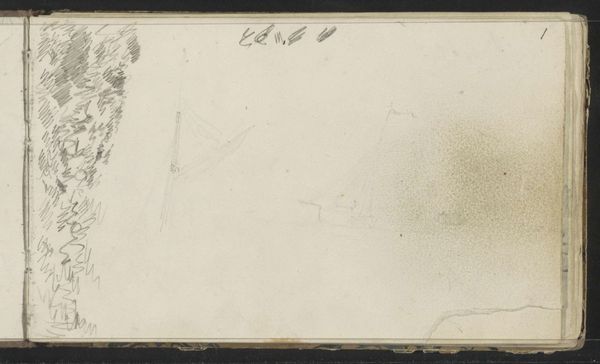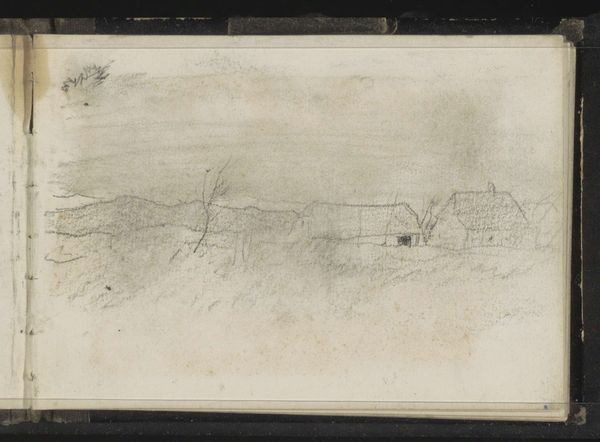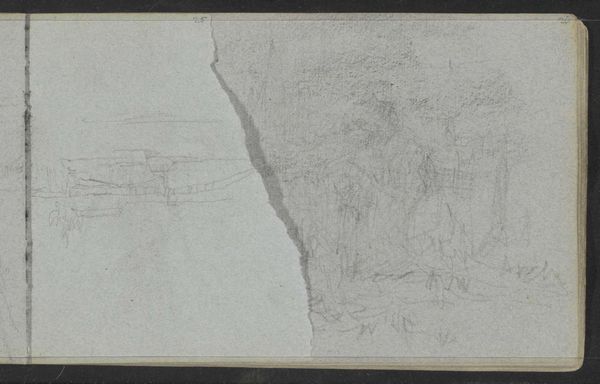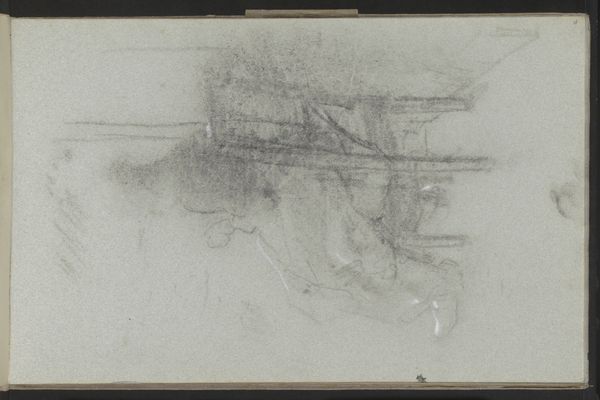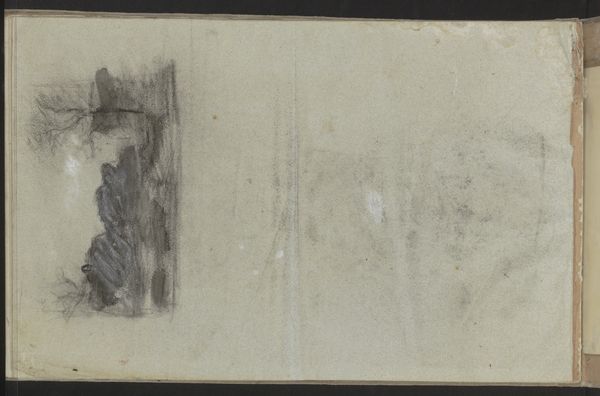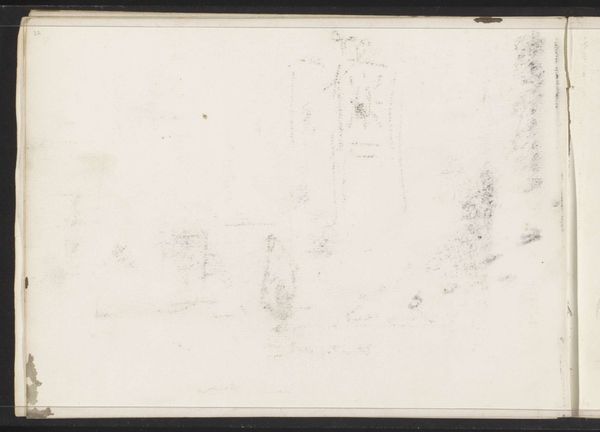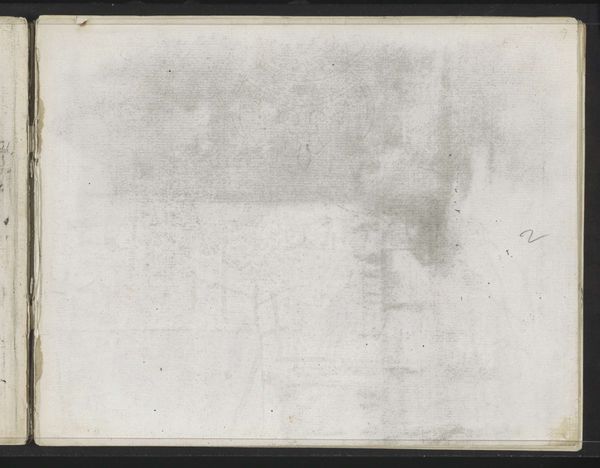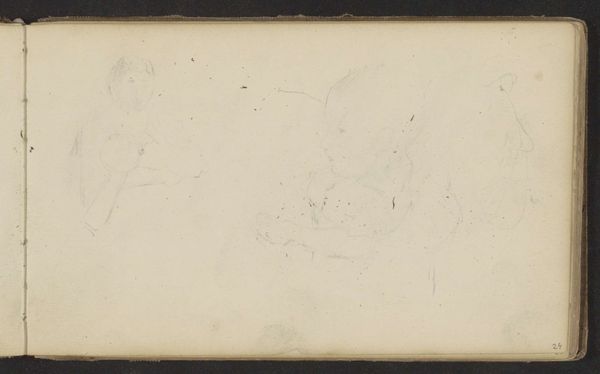
drawing, paper, graphite
#
drawing
#
16_19th-century
#
landscape
#
paper
#
coloured pencil
#
graphite
#
realism
Copyright: Rijks Museum: Open Domain
Editor: We’re looking at "Zeilboot op een vaart," or "Sailboat on a Canal," a drawing done in graphite and coloured pencil on paper by Johan Hendrik Weissenbruch, sometime between 1834 and 1903. It feels so sparse and unfinished, almost ghostly. What do you see in this piece, from a formalist perspective? Curator: Precisely. Notice how the composition is structured around a few, deliberate lines. The horizon, albeit faint, anchors the scene, bisecting the page into sky and water. The single, attenuated line of the sailboat's mast creates a vertical counterpoint, interrupting the horizontal flow and drawing the eye upward. Weissenbruch utilizes negative space—the blankness of the paper itself—to evoke the vastness of the atmosphere and the flatness of the water. It becomes an active element, wouldn't you agree? Editor: I do, it's not empty at all, more like potential. So the relationship between the lines themselves and the void around them is crucial? Curator: Indubitably. The sparse marks invite the viewer to complete the image mentally. Observe how the shading is not representational; instead, it serves to create depth and atmosphere. How the few darker marks disrupt the eye? The overall effect is one of understated elegance and quiet contemplation, don’t you think? Editor: It is. I hadn't thought about how the absence of detail contributed so much to the overall impression. I appreciate how this encourages us to find structure and meaning from so little. Curator: And I am fascinated by your observation about “potential”. I believe it captures Weissenbruch’s formalism, a foundation that lets us consider line, void, shading and perspective – elements he skillfully assembled.
Comments
No comments
Be the first to comment and join the conversation on the ultimate creative platform.

